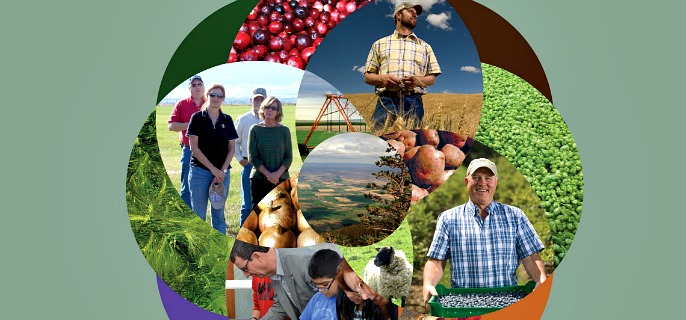
IMAGE COURTESY OF ODA
Oregon is just one of 14 states without a leadership development program for those tied to the natural resource industries.
Until now.
REAL Oregon– which stands for Resource Education and Agricultural Leadership– is a program ready to get started with its first class of future leaders slated for 2017. With support from the agriculture, forestry, and fishing industries in the months to come, an annual crop of natural resource leaders will emerge, ready to give back to their communities by using the skills learned through the program.
“The Oregon REAL program offers an opportunity to bridge the gap between urban Oregonians and our natural resource industries,” says Oregon Department of Agriculture Director Katy Coba. “I’m excited to see a program that will produce leaders in the natural resources sector who not only appreciate the state’s diverse population, but can effectively work with all Oregonians to promote healthy and vibrant agriculture, fishing, and forest products industries.”
The shape and form of the annual leadership development program has largely been the work of a steering committee whose members represent a diversity of natural resource interests. In building a program, the committee saw no need to reinvent the wheel. The neighboring states of Idaho, Washington, and California have established leadership programs. Idaho, in particular, seems to use a format that can serve as a model for Oregon.
“The diversity of Oregon agriculture creates many challenges and communication with the right people at the right time is critical,” says Doug Hoffman, President and CEO of the Pacific Northwest agricultural cooperative Wilco and a graduate of the Leadership Idaho Agriculture program. “Relationships of trust can be created through the development of leaders in the REAL Oregon program and, as a result, it makes those tough discussions down the road much easier.”
Real Oregon aims to bring future leaders from agriculture, fishing, and forestry together to learn leadership skills and gain a greater understanding of Oregon through a series of training sessions held in five diverse regions of the state. While the focus is on the natural resource industry sectors, the steering committee wants leaders who will serve all of Oregon, not just the interests of their industry.
“We want folks in these sessions who are producers– farmers, ranchers, forest managers, fishermen– but we also want potential leaders from government agencies and higher education,” says Bill Buhrig, an Oregon State University extension agent in Malheur County who also attended the Leadership Idaho Agriculture program. “This is a professional development program for professionals. It’s for people who typically know where they are in their career as they enter the program.”
Buhrig, one of the Real Oregon steering committee members, says prospective participants may already be leaders in their respective jobs–whether it is being good stewards of the land and water or effective marketers of their products. But do they have the skill set to lead a group in a meeting, go testify at the State Capitol, or be active on the local school board? Successful graduates of the program will be better equipped to provide leadership and a natural resource perspective no matter how they choose to move forward.
“We hope that those who complete this program give back to the community,” says ODA’s Kathryn Walker, a steering committee member. “Maybe they become a commodity commission board member or serve on their school board or they get involved in the legislature or be willing to answer a reporter’s question about an agricultural issue. These leaders can help strengthen the message from Oregon’s natural resource industries.”
Under the program’s format, 30 participants will be dedicating five weeks of their time. Each year, the training begins in November and concludes in March the following year with the leadership class meeting once a month for two-and-a-half days at each of five locations. The steering committee chose Burns, Astoria, Medford, Salem-Portland, and Boardman as the five sites that can provide the diversity of natural resources required by the program’s curriculum. Applications for the first class are expected to be available in spring 2017.
Before the program can successfully launch, it needs industry support. It will cost an estimated $150,000 annually to run the program, which pays for speakers, class materials, lodging and meals, and administrative oversight. Class members will pay a portion of that cost, but REAL Oregon is asking for sponsorships from those associated with the natural resource industries. Steering committee members plan to make presentations at upcoming meetings of organizations, making the case for support and participation. Organizations can also help identify potential class members.
For more information about REAL Oregon, go online.









